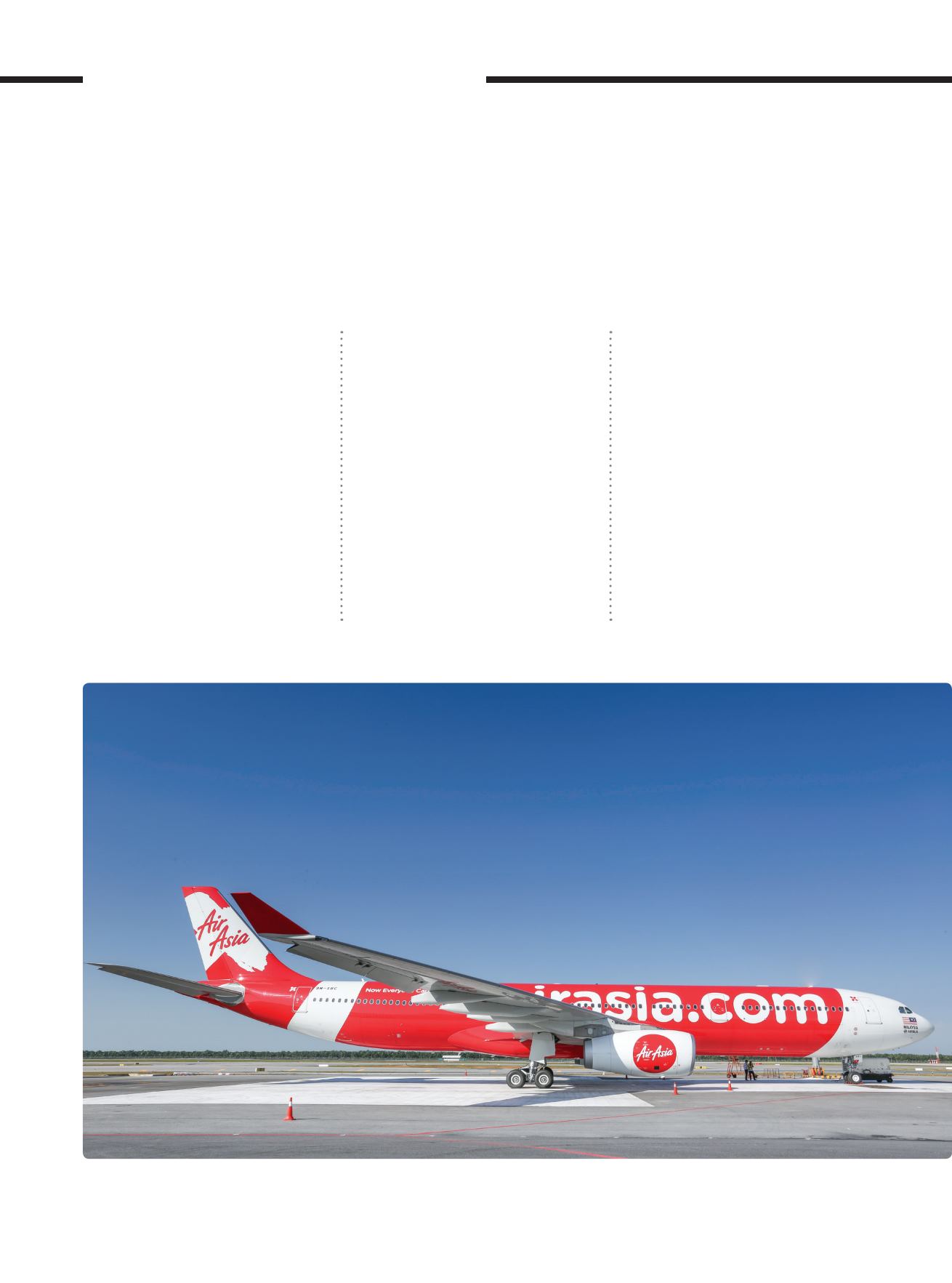

FLYING WITH THE X FACTOR
At the same time, pressing on with the
turnaround initiatives, AirAsia X continued
to scrutinise all costs and trim any
unnecessary expense. As part of its cost
reduction drive, it did not take in any
new aircraft during the year, for the third
year running. Instead, the team focused
intently on its fleet management to ensure
better turnaround times and on-time
performance enabling increased aircraft
utilisation.
The results were quite astounding,
with aircraft utilisation improving from
an already high 14.5 hours in 2016 to
15.4 hours. In addition, management
renegotiated various contracts with
partners and vendors, while outlining
effective strategies to manage the increase
in fuel price as well as the depreciating
Ringgit. As a result, AirAsia X Berhad’s
cost per available seat kilometre (CASK)
reduced by 2% from 13.12 sen in 2016 to
12.80 sen, firmly establishing its position
as the lowest unit cost airline in the world.
This contributed to AirAsia X Berhad more
than doubling its profit after tax (PAT) from
RM44.8 million to RM98.9 million.
It was a turnaround year for AirAsia X
Thailand, which recorded its first full-
year profit of USD8.7 million. Although
starting on slightly shaky grounds
following the death of the nation’s King
and the government’s clampdown on
zero-dollar tours in the last quarter of 2016,
the tourism market very quickly rallied.
AirAsia X Thailand capitalised on the
upturn to increase its flight frequencies to
Osaka (Japan) and Seoul (South Korea),
ending the year with a 17.4% increase in
number of guests carried to 1.62 million
accompanied by a significantly enhanced
load factor of 91%, compared to 85% in
2016, as well as an even more pronounced
on-time performance improvement, from
72% in 2016 to 92%. With the lifting of the
International Civil Aviation Organization
(ICAO)’s red flag on the Thai aviation
industry in August, and the delivery of
three aircraft in 2018, it is set to spread its
wings even further.
[ ]
AirAsia Group Berhad
BUSINESS REVIEW
136


















